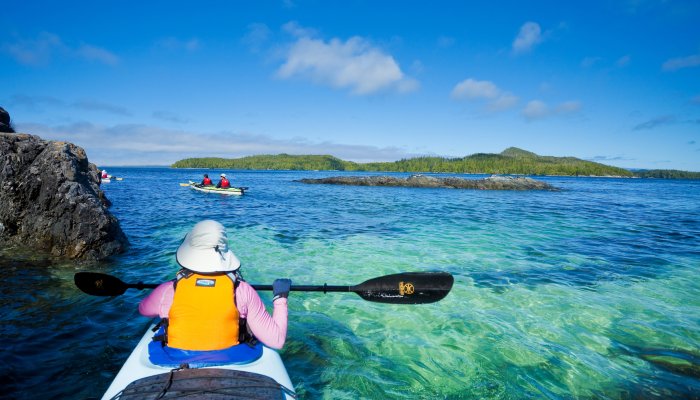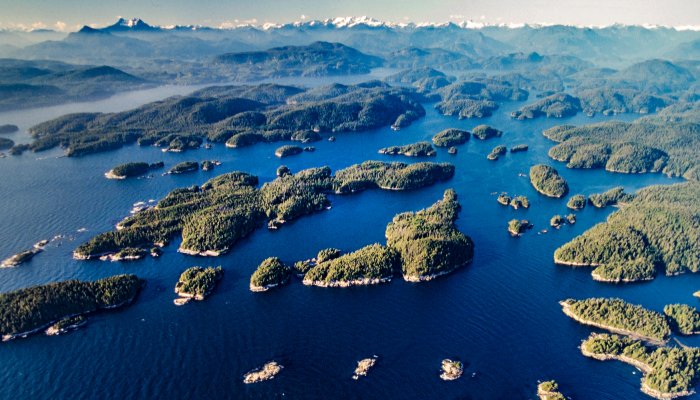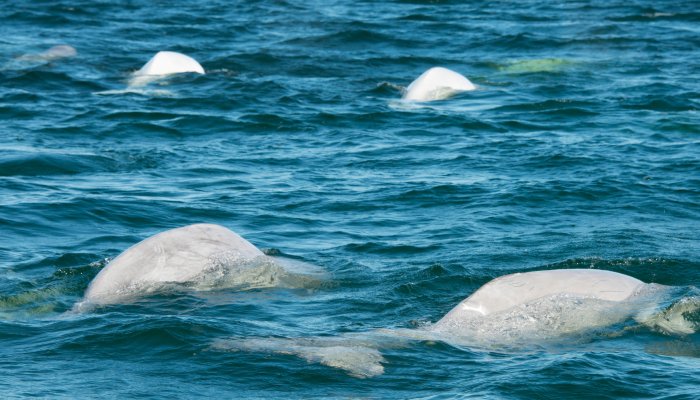Ethical Whale Watching
It goes without saying that whales are incredibly rare and unique creatures, with many currently endangered due to overfishing, pollution, climate impacts, and commercial whaling. That’s why experiencing them in their natural environment is such a privilege and a “bucket list” activity for many.
But whale watching is not without its problems, and in some cases, can negatively impact the animals. So how can you observe these gentle giants respectfully while being an ally in their conservation? Read on to learn everything you need to know about ethical whale watching and the steps Sea Kayak Adventures takes to ensure its whale-watching experiences are just that.
While some of our trips in Magdalena Bay use small, motorized pangas, all of our British Columbia, and Quebec whale-watching trips are by kayak, ensuring minimal disruption to the animals’ routine and the surrounding environment. As a responsible tourism company, it’s important to be transparent about how we interact with wildlife and our active role in ensuring their long-term survival.
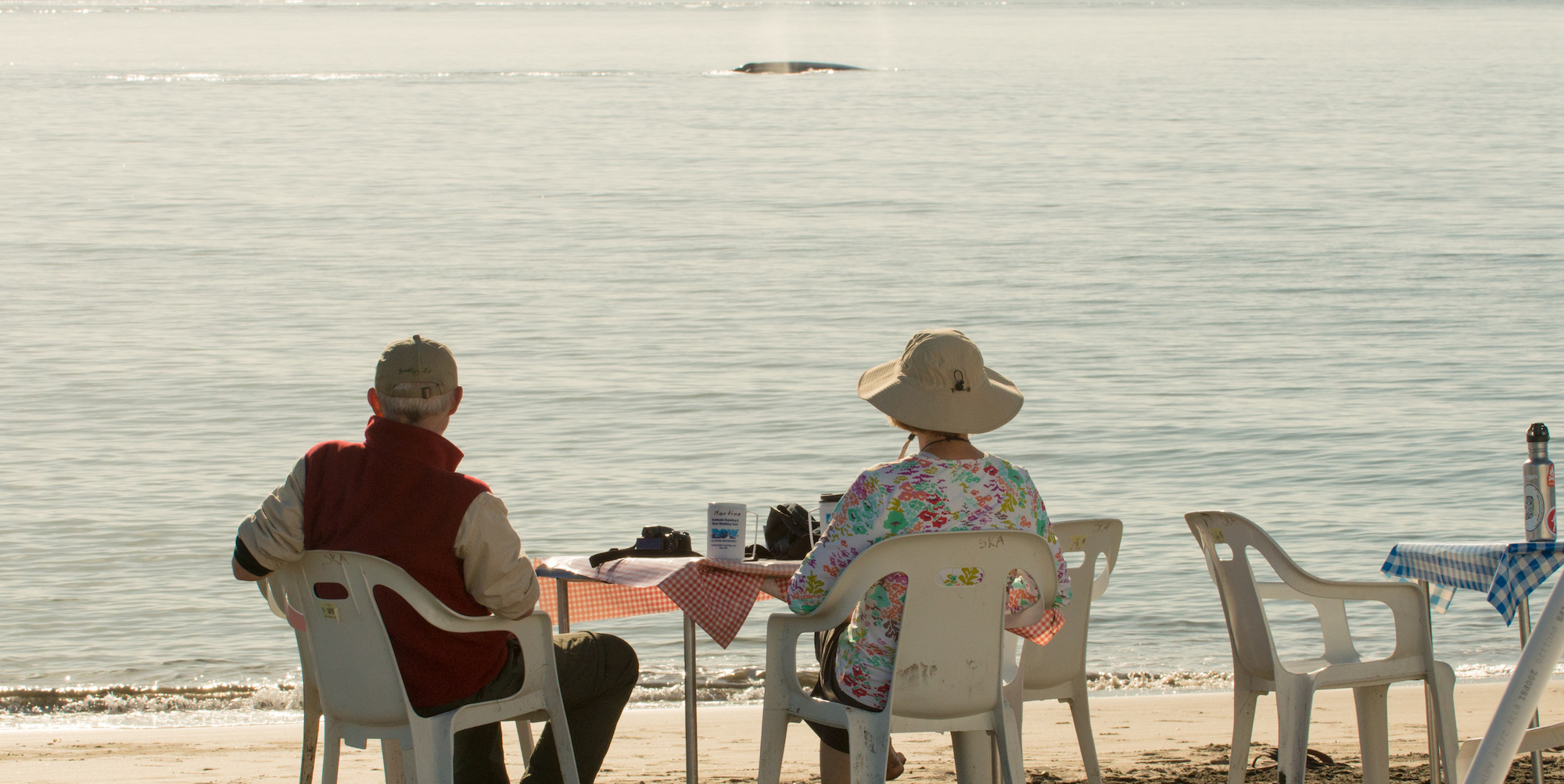
Respect Safe Distances
No matter how you are viewing whales - either from a panga or a sea kayak - you must never get within six feet of the animal. The ocean is their environment and we are guests in their waters - being respectful of their territory is an acknowledgment of that.
On occasion, the whales may come closer to the panga or sea kayak of their own volition but you should never continue approaching them once six feet away unless they come to you.
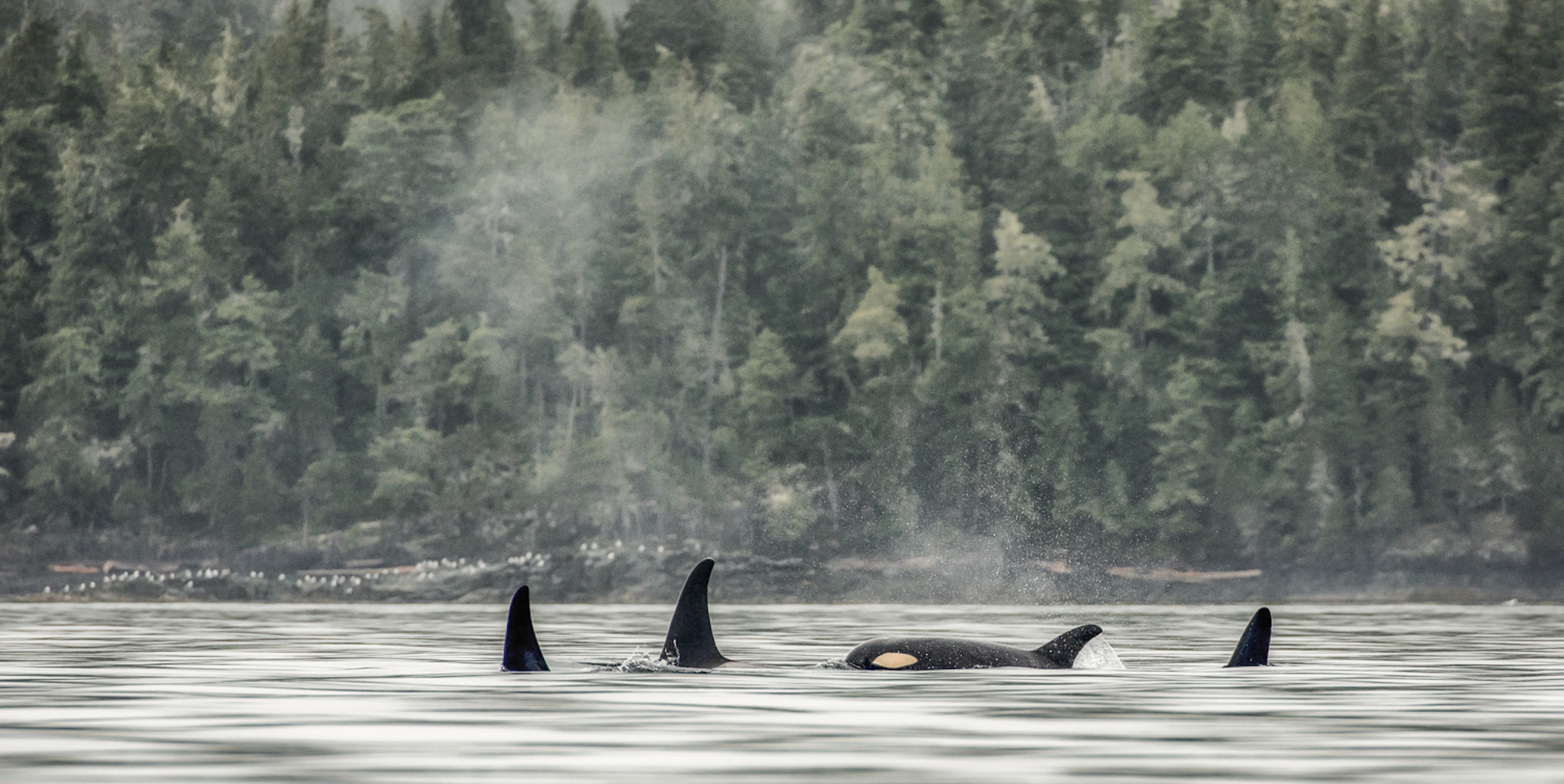
Minimize Noise and Disturbance
As with most wildlife viewing, reducing and minimizing noise is essential to avoid disturbing the creatures or scaring them off. The same goes for whale watching, which is why we put our panga motors into neutral or turn them off completely once we reach six feet away. It’s not only the noise of the motor that can be disruptive but also the fumes from the gasoline.
We also ask that guests keep chatter to a minimum and refrain from provoking the whales through loud calls. In line with our noise minimization approach to whale watching, we will never have more than four boats in the area of one whale at any time.
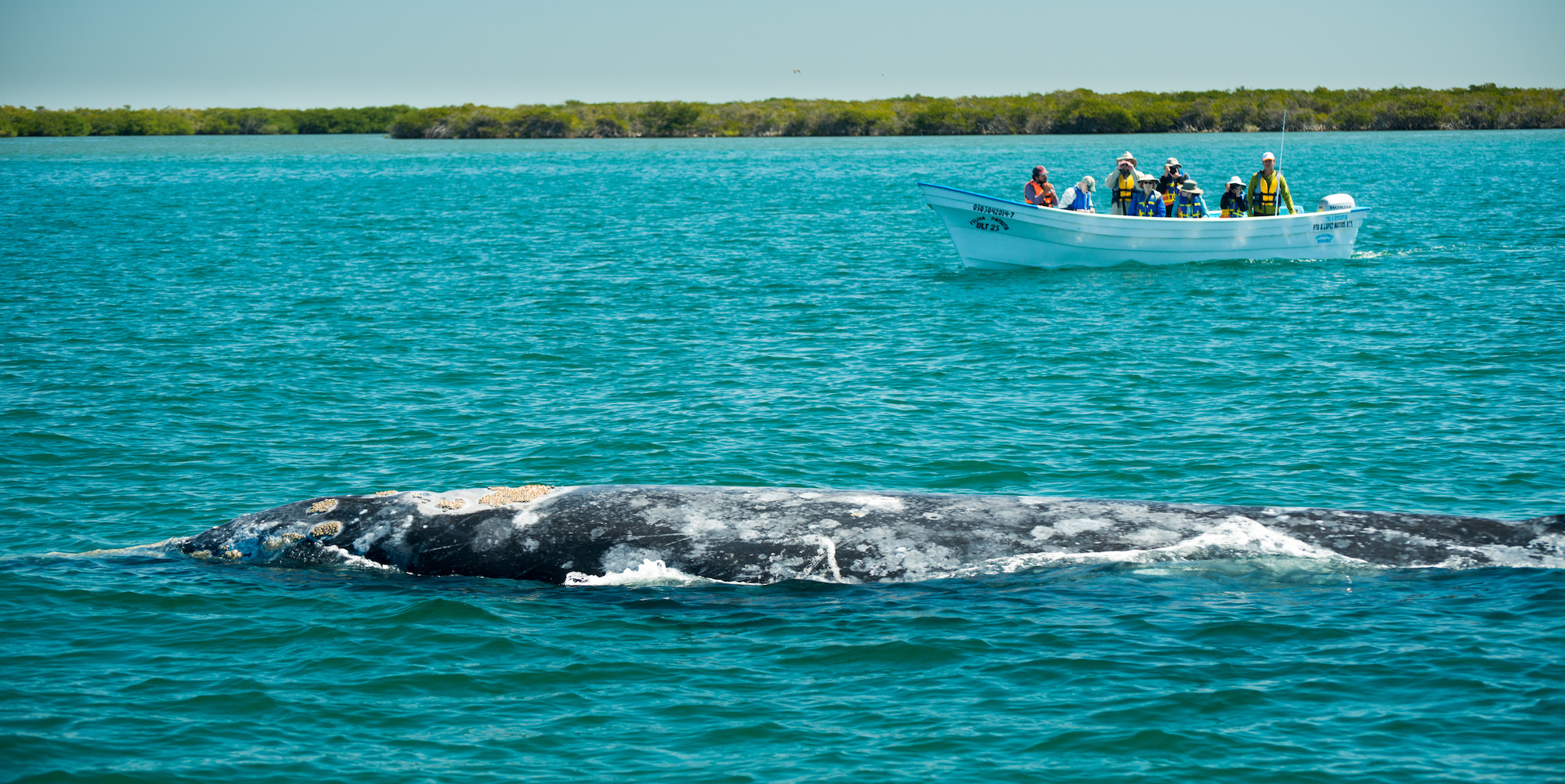
No Feeding or Harassing
Feeding whales is not only harmful for the animals but it’s illegal in many parts of the world. Wild animals are naturally wary of humans (which is a good thing) and feeding them makes them accustomed to our presence and expect food when they hear a boat engine.
Unfortunately, not all vessels are filled with humans who want to observe whales, with some in the business of hunting. Whales also don’t have an appetite for dead fish and the quantities of live krill and fish they prefer to consume are far greater than will fit on a panga or kayak!
It’s also important that you don’t harass the animal in any way to get a reaction or line up the perfect photograph. Simply observing them going about their daily business is spellbinding enough.
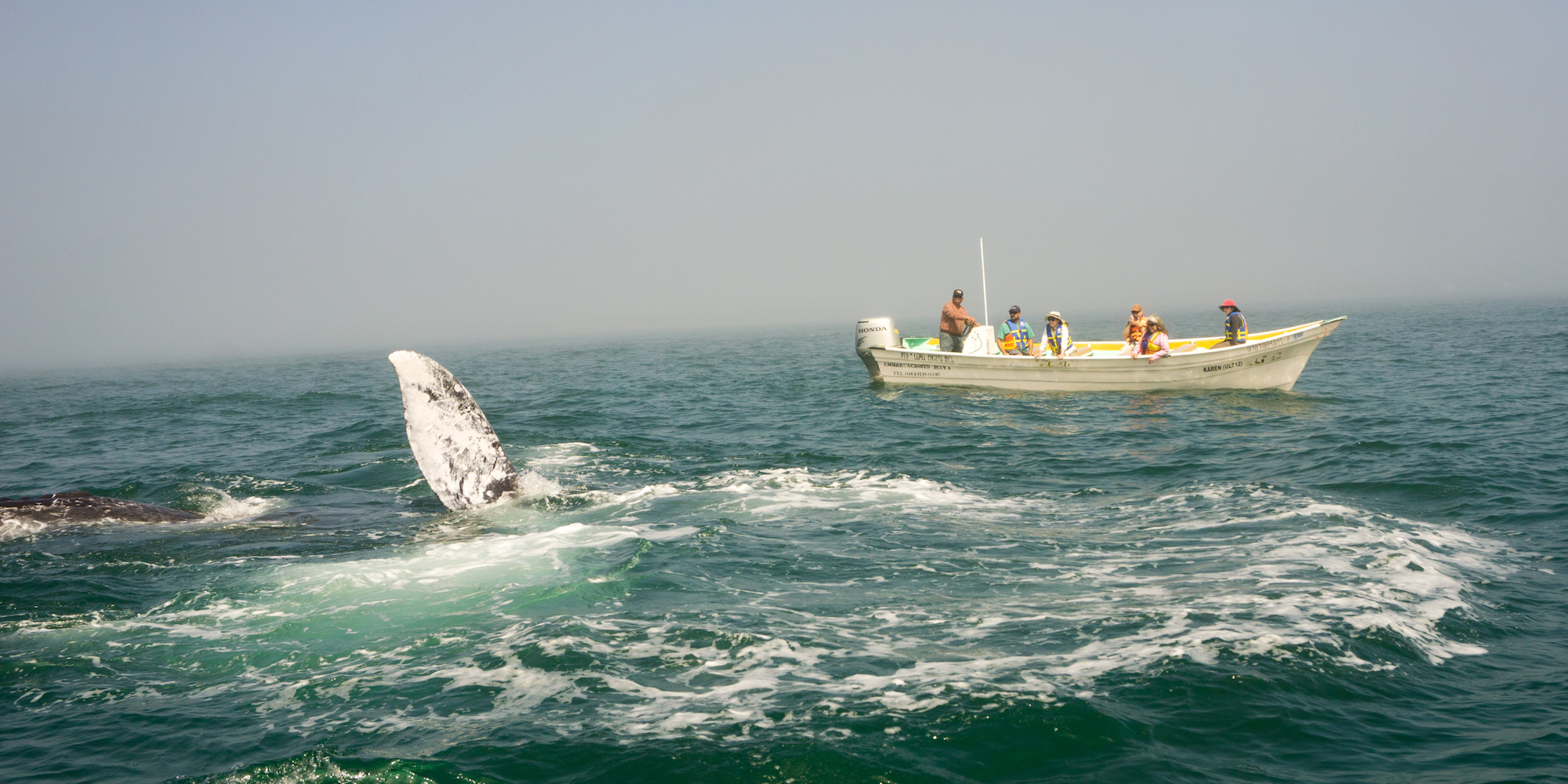
Limit Tour Duration
As you’ll know from personal experience, interacting with people for long periods of time can be draining and it’s the same for whales. Extended periods of boats, kayaks, and people in their environment can be overwhelming and, just like us, they need their space.
That’s why all of our Magdalena Bay whale-watching tours take place in two-hour increments, whether you’re visiting by boat or by kayak. Not only is this in the best interest of the whales but it offers a more balanced experience for our guests.
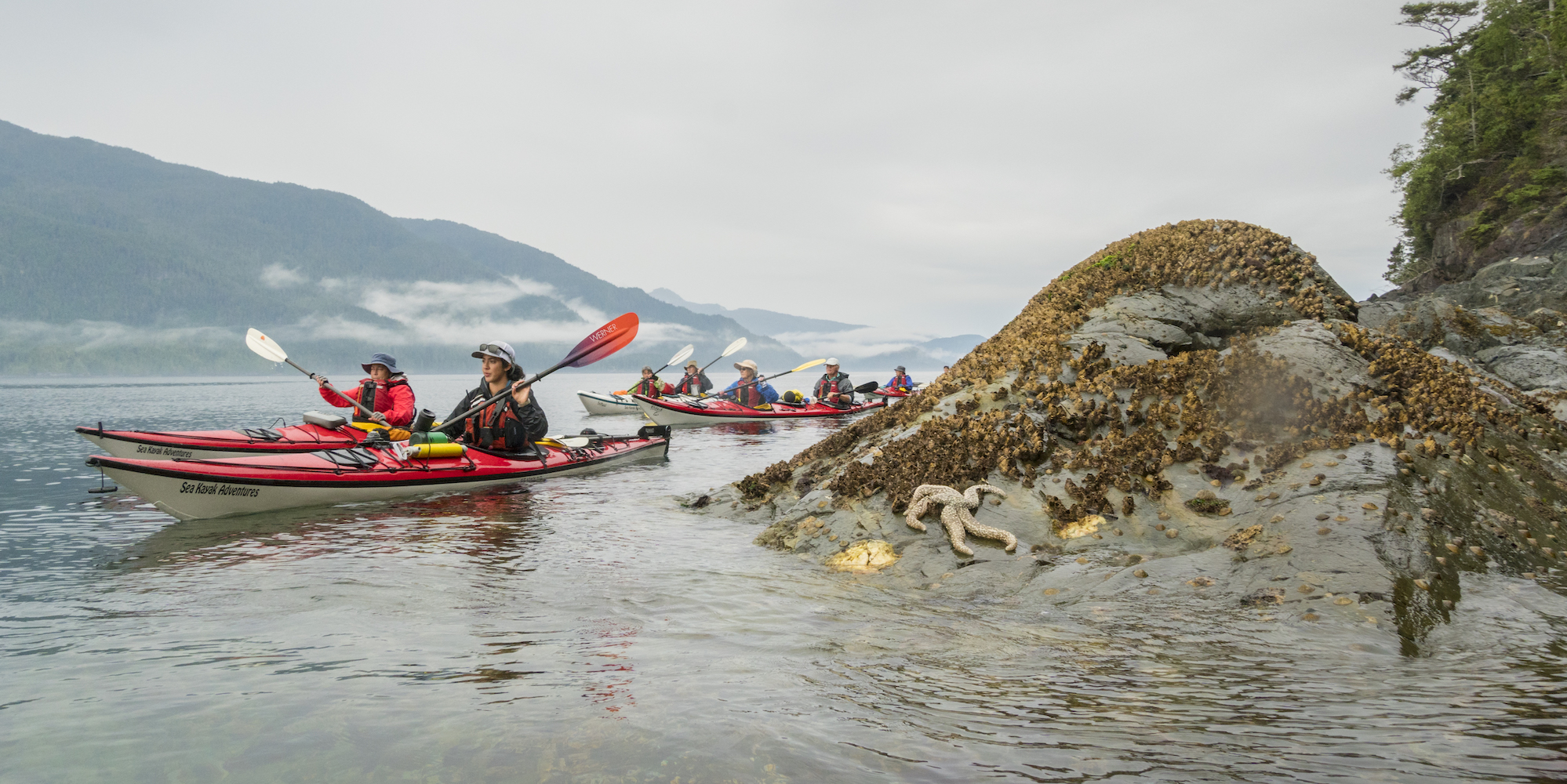
Be Mindful of Local Ecosystems
Coastal ecosystems are tightly intertwined and what happens on land can have an impact on ocean-dwelling species. So it’s important that before and after you step aboard your panga or kayak you follow all guidelines and stay on designated trails.
Avoid disturbing the plant life growing along the shores or the animals that call the coastal habitat “home”. Venturing off the trail and damaging even the smallest species can have a bigger domino effect than you might imagine. Always pay attention to your surroundings, be curious about what you are observing, and don’t be afraid to ask questions.
Contribute to Conservation
As a business working almost exclusively in the natural environment, it’s part of our philosophy to donate some of our profits to organizations helping to preserve the surrounding ecosystems. Sustainable travel is becoming more important than ever and we are committed to protecting the ecosystems in which we operate.
When you sign up for a whale-watching tour with Sea Kayak Adventures, rest assured that funds are being redirected to organizations such as Whale Shark Mexico, BC Marine Trails and the World Cetacean Alliance. You also have the opportunity to make a small donation to many different conservation organizations and nonprofits working to protect the marine wildlife of Baja and British Columbia.
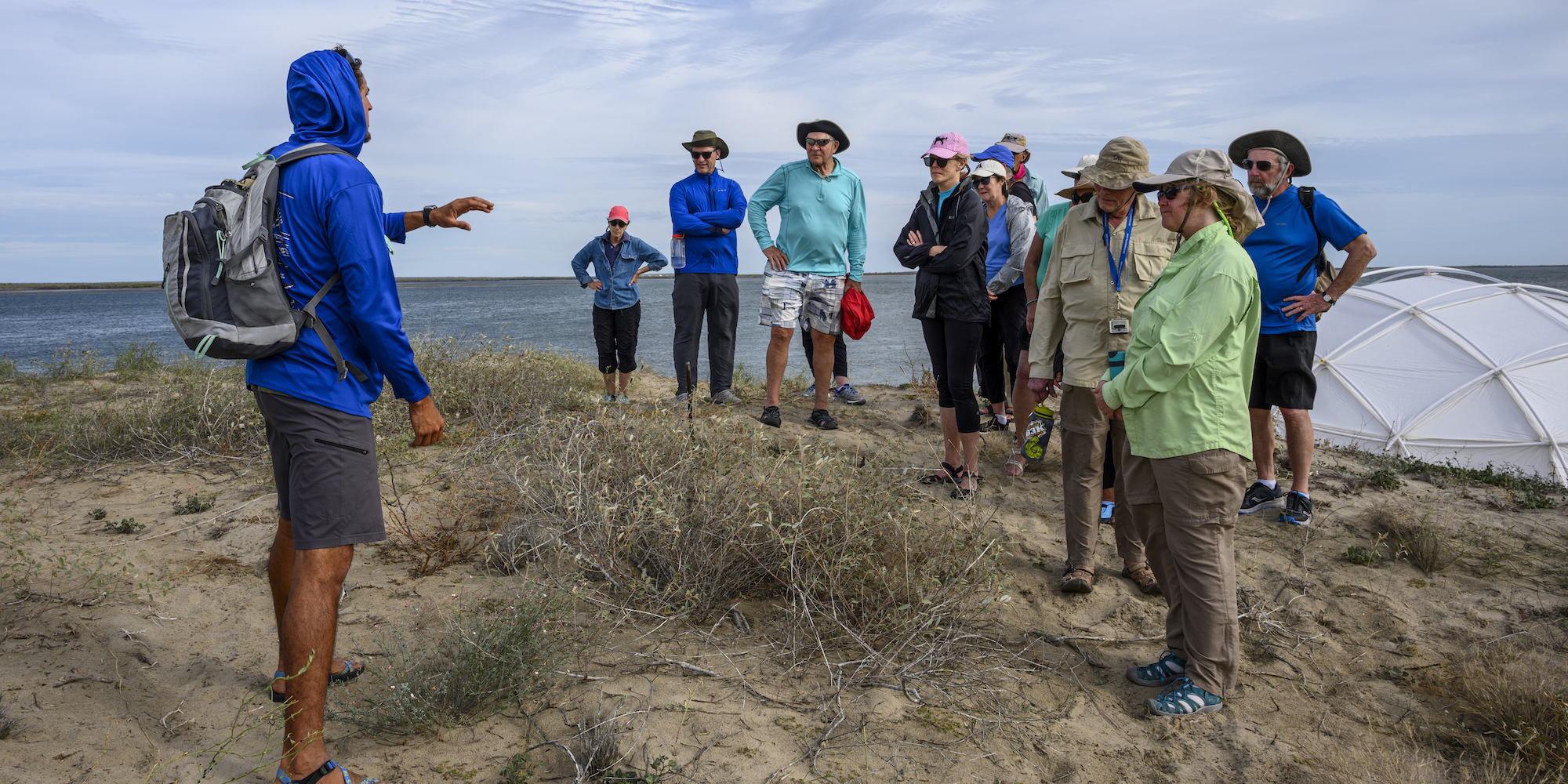
Educate Yourself
Before embarking on a whale watching tour, it’s a good idea to do some research about the behavioral patterns of whales as it will give you a greater appreciation of the animals when you see them in the wild. On the Sea Kayak Adventures blog, you’ll regularly find articles about whales and the wildlife of Baja California in general. The more you learn about whales and the better you understand their plight, the more powerful you become as a conservation ally.
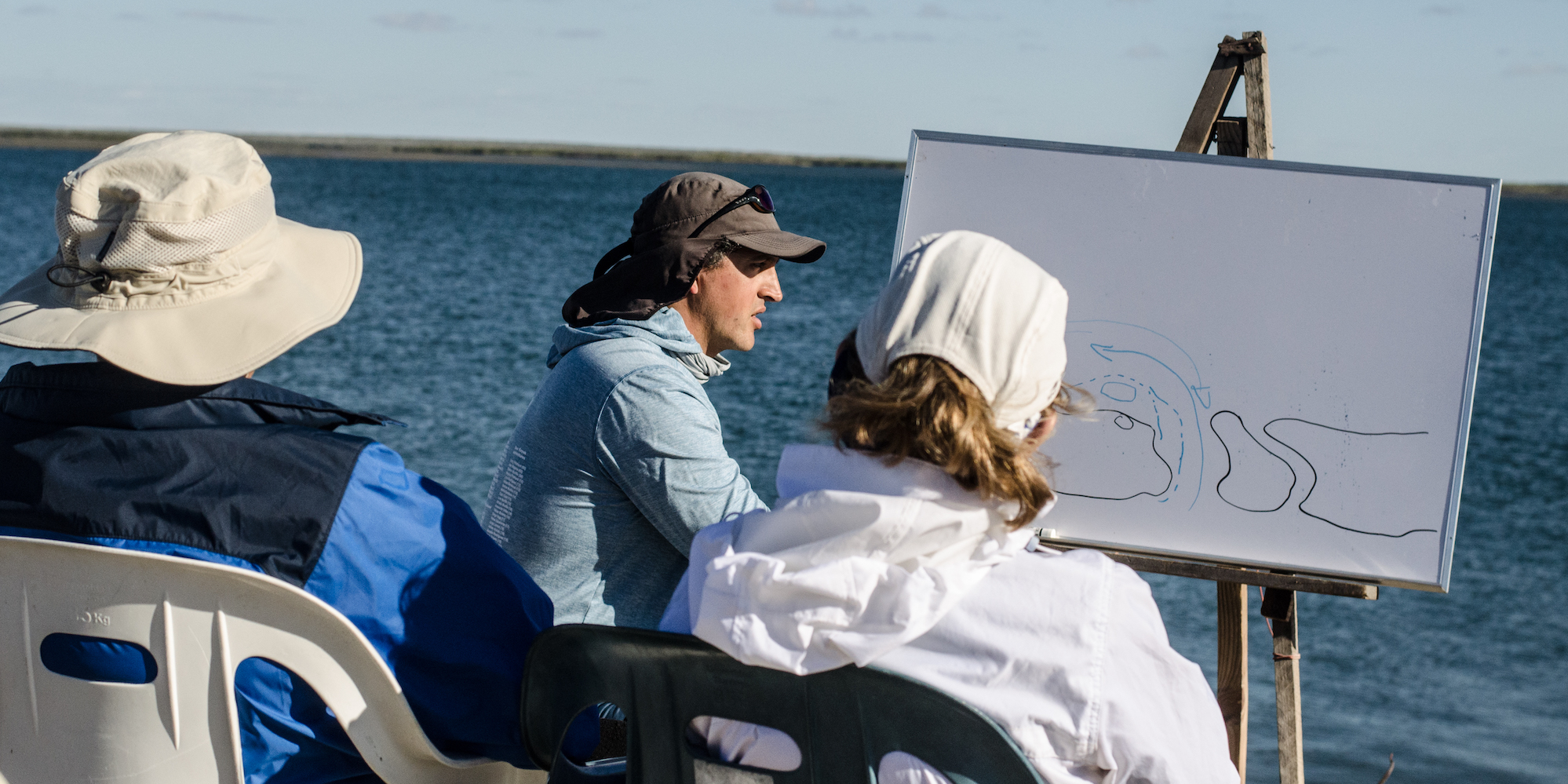
Follow Wildlife Guidelines
Wildlife guidelines are in place for a reason and are usually created in consultation with experts in the field. While it can be tempting to think it won’t make a difference if you break them just one time, the cumulative impacts of this mindset can have devastating results.
On all of our whale-watching tours, we ask that you adhere to the guidelines provided by our team and call out any behavior that goes against them. The knowledge that you have done your bit to ensure the survival of a species is far greater than a single photo opp or interaction.
Reduce Single-Use Plastic
Despite everything we know about single-use plastics, they remain one of the biggest polluters in our oceans and are a huge threat to whales. A recently stranded whale was shown to have ingested 135 different pieces of plastic, including several plastic bags that the whale is believed to have mistook for squid.
For whales, ingesting plastic can result in severe internal injuries and even death while entanglement is also an issue. While the problem of ocean plastic is huge, we can all do our part by reducing single-use plastics during whale-watching trips and our everyday life back home.
On tours with Sea Kayak Adventures, we bring fresh drinking water in reusable containers and ask all guests to bring reusable water bottles in an effort to reduce our need for plastic. Additionally, at camp we always offer reusable plates, bowls, cups, and cutlery.
Whale watching as a conservation ally
Observing whales in their natural environment is a truly humbling experience and something that everyone should witness at least once in their lives. But it’s important that we do so in an ethical manner to ensure these majestic creatures continue returning to their breeding grounds and following their migration routes.
By following the above guidelines, you can rest assured that your whale-watching experience is not having a detrimental impact on the animals but supporting their ongoing conservation.
Baja Whale Watching Experiences
Baja & British Columbia Sea Kayaking & Whale Watching Experiences

